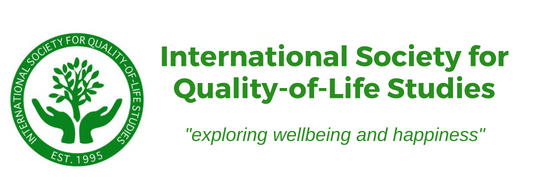Launching the Estes Weighted Index of Social Progress on MIQOLS website
(Estes WISP; http://www.miqols.org/toolbox/isp.html)
The Management Institute for Quality-of-Life Studies (MIQOLS) is pleased to announce the launch of the Weighted Index of Social Progress (WISP). The WISP is a quality-of-life metric innovation of Professor Richard J. Estes, Professor Emeritus of Social Work and Policy at the University of Pennsylvania (USA). Professor Estes has developed the WISP in the 1970s and has reported the quality of life on many countries and world regions since (from 1970s up to 2018) (see references to his publications regarding the WISP in http://www.miqols.org/toolbox/isp.html (click Show Sources).
Specifically, Professor Estes’ WISP is a composite index of quality of life at the country level. That is, the WISP index captures quality of life of the vast majority of the countries (countries that maintains social indicators data). The WISP consists of an overall composite score of each country (shown as an actual score varying from 0 to 100, ranks, and standard deviation from the mean). The overall index is made up of 10 subindices: education, health, women status, defense effort, economic, demography, environmental, social chaos, cultural cohesion, and welfare effort.
The Education Subindex is made up of four indicators: (1) Public Expenditures on Education as Percentage of GDP (+; i.e., the positive sign indicates that the higher the score the higher the quality of life); (2) Primary School Completion Rate (+); (3) Secondary School Net Enrollment Rate (+); and (4) Adult Literacy Rate (+).
The Health Subindex consists of six indicators: (1) Life Expectation at Birth (+); (2) Infant Mortality Rate (-; i.e., the negative sign indicates that the higher the score the lower the quality of life); (3) Under-Five Child Mortality Rate (-); (4) Physician Per 100,000 Population (+); Percent of Population Undernourished (-); and (6) Public Expenditure on Health as Percentage of GDP (+).
The Women Status Subindex consists of five indicators: (1) Female Adult Literacy as Percentage of Male Literacy (+); (2) Contraceptive Prevalence among Married Women (+); (3) Maternal Mortality Rate (-); (4) Female Secondary School Enrollment as Percentage of Male Enrollment (+); and (5) Seats in Parliament Held by Women as Percentage of Total (+).
The Defense Effort Subindex consists of one indicator, namely Military Expenditures as Percentage of GDP (-).
The Economic Subindex consists five indicators: (1) Per Capita Gross National Income as Measured by PPP (+); (2) Percent Growth in GDP (+); (3) Unemployment Rate (-); (4) Total External Debt as Percentage of GDP (-); and (6) GINI Index Score (-).
The Demography Subindex comprise three indicators: (1) Average Annual Rate of Population Growth (-); (2) Percent of Population Aged < 15 years (-); (3) Percent of Population Aged > 64 Years (+).
The Environmental Subindex has three indicators: (1) Percentage of Nationally Protected Area (+); (2) Average Annual Number of Disaster-Related Death (-); and (3) Per Capita Metric Tons of Carbon-Dioxide Emissions (-).
The Social Chaos Subindex has six indicators: (1) Violations of Political Rights (-); (2) Violations of Civil Liberties (-); (3) Number of Internally Displaced Persons Per 100,000 Population (-); (4) Number of Externally Displaced Person Per 100,000 Population (-); (5) Estimated Number of Deaths from Armed Conflicts (-); and (6) Perceived Corruption Index (-).
The Cultural Cohesion Subindex has three indicators: (1) Largest Percentage of Population Sharing the Same or Similar Racial/Ethnic Origins (+); (2) Largest Percentage of Population Sharing the Same or Similar Religious Beliefs (+); and (3) Largest Share of Population Sharing the Same Mother Tongue (+).
Finally, the Welfare Effort Subindex has five indicators: (1) Age First National Laws-Old Age, Invalidity & Death (+), (2) Age First National Laws-Sickness & Maternity (+); (3) Age First National Laws-Work Injury (+); (4) Age First National Laws-Unemployment (+); (5) Age First National Laws-Family Allowance (+).
Please visit the WISP metric on MIQOLS’ website at http://www.miqols.org/toolbox/isp.html and start using it for research and to guide public policy decisions at the national and international levels.
http://www.miqols.org/toolbox/isp.html
